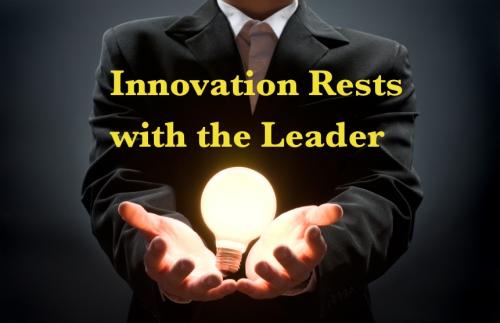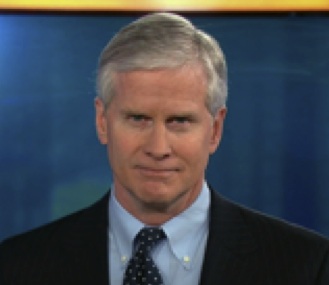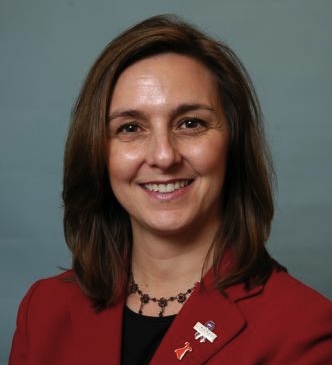 Nothing daring happens around here! Where’s the creativity? Where’s the innovation? Where’s the courage? Fortune favors the bold!
Nothing daring happens around here! Where’s the creativity? Where’s the innovation? Where’s the courage? Fortune favors the bold!
Of course we’ve heard that before. Every organization’s senior leadership longs for something great to happen, for the next great idea to emerge and propel the organization forward into a position as a market leader.
So we stimulate creativity….at least we think we do. We attend creativity sessions. We post our ideas to the company’s website, thinking we submitted them anonymously to avoid the follow-up questions from the good idea czar asking, “Where’s Jim so I can ask him about his perpetual motion device?” Sadly, we’re always found out and our good idea is quickly dispatched. Today, we can use the “Good Idea Bad Idea” (GIBI) app to help bound the creativity that routinely may be missing in our decision making. Who thinks that good idea app is a good idea?
Creativity exists within every organization but it languishes until forced to reveal itself usually in times of crisis. By then, the good idea is too late, not relevant, and fails. We occupy our time with the exigencies of the moment. The way-too-full inbox of emails dictates how we expend our energies. We spend our time putting out fires when we need to be starting fires and building the environment where good ideas can flourish. It starts with re-imagining risk.
Risk is defined as “the potential to lose something of value weighed against the potential to gain something of value….the interaction with uncertainty.” We can quantify the potential gain or loss and, in almost all cases, handicap the likelihood of each. This calculation is fairly objective. If our numbers line up, we go for it. By comparison, we have never been able to quantify the “interaction with uncertainty.” Resultantly, we naturally walk away from risk; it can burn us.
So here’s my suggestion if we “interact with uncertainty.” Tell the boss. It’s really that simple.
We must view risk as the participation of the organization in our decisions and resulting actions, not as singular or isolated events. As organizational leaders, we must buy-in to the decisions of our team. We must set the authorities and responsibilities within the team and be accountable for the results however and in whatever form they may manifest themselves.
By comparison, a gamble is not a risk, but we often conflate the two. A risk includes the leader’s knowledge of the intended activities and the potential gain versus the loss. A gamble is the decision of an individual within the organization to act alone, choosing not to include the team, the leader’s involvement in the decision, nor the broader set of goals and principles upon which the organization rests. In other words, a gamble is a solo act and a bad idea! If we take risk, we include the boss in our decision. If we gamble, we choose not to. The modern cultural definition of a gamble is “what happens in Vegas stays in Vegas.” Not sure about you, but I don’t need an app to help me with that decision matrix.
However, organizational leaders often treat risk and gamble similarly regardless of the results. When a risk or a gamble goes well, the boss and the organization benefit. By comparison, when both fail, only the individual is held accountable. That kills creativity.
If I’m “rolling my own,” acting with no authorities from my leadership, I alone own the results of my actions if those results are bad. I must be held accountable if things go badly. I am, after all, a member of a team. I will need a lifeline that only my teammates can provide if things go south. If I fail to ask for one, there is precious little the leadership can do to rescue me. By comparison, if I’m acting at the behest of my boss and minimally she acquiesces to my recommendation or, ideally, she provides authority and even resources to support my proposed course of action, this is her decision….good or bad.
Organizations see this. When leaders encourage risk taking and demonstrate acceptance of risk through organizational structure, and leaders assume responsibility for all results….good or bad, there will be a limitless supply of creativity generated at all levels.
The alternative is not surprising. Creativity hides in the corner and migrates to competitors when failure flops in the hallway and the boss takes no ownership. For creativity to flourish, innovation must be present. This is where leaders must thrive.
Creativity is the thinking. Innovation is the doing. Innovation rests with the leader. An organization that encourages, no demands, risk, will be innovative. Daring, courageous, and bold things happen when the leader underwrites risk and all employees know that the boss has their backs.
Many CEOs are afraid to get too personal or step into the forefront and take risks, but the world’s best CEOs are indistinguishable from the companies they run.
Marc Benioff, CEO Salesforce.com
Marc Benioff boldly has declared the death of software while staking out his position at the forefront of cloud computing through the creation of Saleforce.com. His unapologetic observation about many in corporate leadership is spot on. If there is any daylight between the leader and the risks he or she encourages, organizational potential will not be fully realized. Embrace risk; build innovation. Demand it. Lead. Make it personal.
How can you measure the innovation within an organization? Here are the characteristics:
5 Characteristics of Innovative Organizations
1. Inclusion.
Ideas will originate on the edges of an organization but they will never be realized unless they can be normalized. Leaders must encourage creativity to race to the core in order to innovate and push ideas to reality. Soldiers always solve problems long before Generals know the problems exist. Innovative organizations get the idea to the General so he can pay for it.
2. Inequality of ideas.
Not all ideas are good. Innovative leaders must be willing to encourage the competition of ideas and then pick favorites. The market picked Facebook, not MySpace. We should be similarly harsh or the market will make a decision for us that we may not like.
3. Empowerment to act.
Don’t try to empower creativity; you’ll fail. Build an innovative organization and watch what happens. Provide the tools necessary to realize creativity through innovative design and structure. This will cost money but it’ll be well spent. Look at the top tier companies for innovation, IBM, General Electric, and DuPont. They do not suffer a shortage of overhead dollars to fund their research and development efforts but the results of their innovative efforts continue to change how we live.
4. Be impatient.
Drive innovation and expect results. Use a combination of force and persuasion. I would not suggest using the words attributed to General Douglas MacArthur to General Robert Eichelberger upon his assumption of command in New Guinea in World War II, ”take Buna or do not come back alive” but you get the point. Impatience can be a virtue. By the way, Eichelberger took Buna.
5. Function before form…always.
Focus on the functions, not the form, and publish them. Functional alignment is a compass. When people hit a snag, they refer back to the functions and adjust accordingly. Stay on course.
We may think we’re looking for a creative genius like Steve Jobs and a tech innovator like Steve Wozniak to build the next big thing. Why shouldn’t we? They’re out there right now. Creativity exists in all corners and levels of your organization. However, creativity will never be realized until innovators bring it into the light of day and subject it to scrutiny. That’s the job of leaders. Build and demand an environment of risk taking where ideas “on the edge” are accelerated, welcomed, and embraced by the core; bad ideas are discarded without casualties; and everyday should begin with a tad of impatience and eagerness for results.
Bosses will always seek the next big thing and assume that more can be done to realize it…whatever “it” is. Through organizational leadership that expects its people to take risk, courage will not be lacking. Be bold.
 Written by Major General James "Spider" Marks (retired). Marks is an adjunct professor at Georgetown University, an on-air military and intelligence contributor to CNN, having worked with Fox News, CBS, MSNBC, and BBC. He is a routine keynote speaker at corporate engagements and provides classes at the US Army War College and conducts webinars in national security for investment firms. He sits on several boards to include the Call Of Duty Endowment that facilitates veterans’ employment. He is an author having contributed to and edited a book on leadership in International Relations and published several articles in military publications. He is an Honor Graduate of the US Army’s Ranger School, a Master parachutist authorized to wear Canadian and Korean Airborne wings, and has been awarded the Distinguished Service Medal, Legion of Merit, Bronze Star, and multiple combat, expeditionary, and service ribbons.
Written by Major General James "Spider" Marks (retired). Marks is an adjunct professor at Georgetown University, an on-air military and intelligence contributor to CNN, having worked with Fox News, CBS, MSNBC, and BBC. He is a routine keynote speaker at corporate engagements and provides classes at the US Army War College and conducts webinars in national security for investment firms. He sits on several boards to include the Call Of Duty Endowment that facilitates veterans’ employment. He is an author having contributed to and edited a book on leadership in International Relations and published several articles in military publications. He is an Honor Graduate of the US Army’s Ranger School, a Master parachutist authorized to wear Canadian and Korean Airborne wings, and has been awarded the Distinguished Service Medal, Legion of Merit, Bronze Star, and multiple combat, expeditionary, and service ribbons.
 Contributed by Karen Kuhla, Ph.D., Executive Director of (TLDG) The Thayer Leader Development Group at West Point. Karen oversees leadership programs for corporate and non-profit organizations utilizing applied academics with experiential learning. Training is conducted by General Officers and Keynote Speakers grounded in the Army’s leadership philosophy “Be, Know, Do” and situated at the historic Thayer Hotel at West Point. Karen has more than 15 years of corporate training experience leading executive leadership programs for Arthur Andersen, LLP, CDR International, a Mercer-Delta Consulting Company, and GE Healthcare’s consulting group delivering GE’s leadership development systems and Change Acceleration Process training to healthcare executives; in March, 2008, she became Global Program Manager, Leadership Development at GE’s Corporate University, Crotonville.
Contributed by Karen Kuhla, Ph.D., Executive Director of (TLDG) The Thayer Leader Development Group at West Point. Karen oversees leadership programs for corporate and non-profit organizations utilizing applied academics with experiential learning. Training is conducted by General Officers and Keynote Speakers grounded in the Army’s leadership philosophy “Be, Know, Do” and situated at the historic Thayer Hotel at West Point. Karen has more than 15 years of corporate training experience leading executive leadership programs for Arthur Andersen, LLP, CDR International, a Mercer-Delta Consulting Company, and GE Healthcare’s consulting group delivering GE’s leadership development systems and Change Acceleration Process training to healthcare executives; in March, 2008, she became Global Program Manager, Leadership Development at GE’s Corporate University, Crotonville.
Did you find this article informative? Let us keep you up-to-date on all of our training articles. Please sign up for our newsletter today!
Here are some additional training articles you may be interested in:
Emotional Intelligence in the Workplace: How to Develop Yourself & Your Team
Overcoming Disconnect Between Middle & Upper Management
Strategic Leadership-How Strategic Are You?
About ManagingAmericans.com
We are America’s Management & Leadership Center for Professional Development. Our well-rounded business content is designed for Leaders & Managers to implement change with ease & improve accountability amongst their teams. Here you’ll find Articles from 30+ Expert Consultants, Coaches & Thought Leaders, access practical Business Templates, learn new skills & connect to our Expert Panel to answer your organizational challenges.